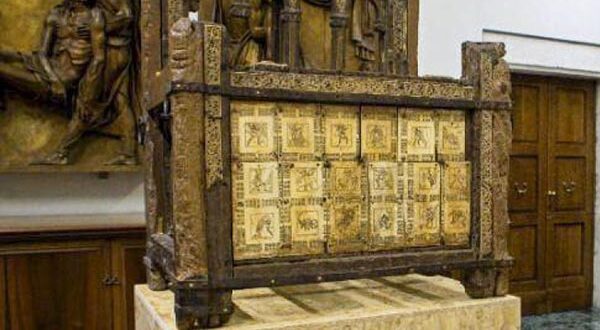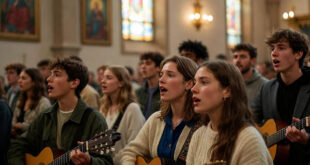The Catholic Church has faced numerous crises throughout history, but few have been as profound and polarizing as the one we are experiencing today. In this context, sedevacantism has emerged as a position that seeks to respond to the apparent deviation of faith and ecclesial authority following the Second Vatican Council. However, is it a legitimate position? How does it hold up theologically? And most importantly, what implications does it have for the spiritual life of Catholics? In this article, we will explore sedevacantism in depth—its foundations, challenges, and how a faithful Catholic should respond to the Church’s crisis without straying from the Truth revealed by Christ.
1. What Is Sedevacantism?
The term “sedevacantism” comes from the Latin sede vacante, meaning “vacant seat.” In an ecclesial context, it is used when the Apostolic See of Rome does not have a legitimate Pope, such as during the period between the death of a pontiff and the election of his successor. However, sedevacantists argue that the See of Peter is vacant not because of the death of a Pope but because they consider postconciliar pontiffs—beginning with John XXIII or Paul VI, depending on the group—to be illegitimate.
The main argument of sedevacantism is that the changes introduced by the Second Vatican Council, such as liturgical reform, ecumenism, and episcopal collegiality, have led to a crisis of faith and a rupture with traditional Catholic doctrine. For sedevacantists, the Popes who promoted these reforms fell into heresy and therefore automatically lost their authority, leaving the See of Peter vacant.
2. Theological Foundations of Sedevacantism
Sedevacantism relies on several theological premises, many based on the Church’s traditional doctrine concerning heresy and papal authority. Some of the main ones include:
a) The Impossibility of a Heretical Pope
One of the most frequently cited arguments by sedevacantists is that a Pope cannot fall into formal heresy and remain a true Pope. They base this claim on the teachings of theologians like St. Robert Bellarmine, who maintained that a heretic automatically loses jurisdiction in the Church. According to this logic, if postconciliar Popes have promoted doctrines contrary to the faith (such as modern ecumenism or religious liberty), then they are no longer legitimate Popes.
b) The Indefectibility of the Church
Sedevacantists argue that the Church is indefectible, meaning that it cannot essentially change its doctrine or fall into error. Since they interpret the reforms of Vatican II as doctrinal deviations, they conclude that the visible Church has been taken over by impostors and that true Catholicism persists only in small groups faithful to tradition.
c) The Magisterium and Tradition
For sedevacantists, the Church’s Magisterium must be in full continuity with the past. If a Pope teaches something that contradicts traditional doctrine, he loses his legitimacy. They use pre-Vatican II encyclicals, such as Quanta Cura and Syllabus Errorum by Pius IX, to argue that modern teachings on religious liberty and ecumenism contradict previous doctrine.
3. Objections to Sedevacantism
Despite its theological foundations, sedevacantism faces serious objections both from Catholic theology and from common sense.
a) The Visibility of the Church
Christ promised that His Church would endure until the end of time (Mt 16:18). Sedevacantism, by denying the legitimacy of all Popes since Vatican II, faces the problem of apostolic continuity. If the visible Church has disappeared or fallen into apostasy, where is Christ’s legitimate authority on Earth?
b) A Misunderstanding of Indefectibility
The indefectibility of the Church does not mean that crises, disciplinary errors, or even ambiguous teachings cannot occur in the Magisterium. History shows that there have been Popes with doctrinally questionable tendencies (such as John XXII), yet the Church continued to exist without losing its identity.
c) Schism and Obedience
Sedevacantism inevitably leads to schism—that is, separation from communion with the Pope and the legitimate hierarchy. The Church has repeatedly condemned a schismatic attitude, reminding us that even if a Pope is a poor ruler, he remains the visible head of the Church (Catechism of the Catholic Church, 882).
4. How Should a Catholic Respond to the Current Crisis?
The crisis in the Church is undeniable, but sedevacantism is not the answer. Instead of adopting a radical stance, Catholics should remain firm in the faith, praying and studying doctrine to discern the truth without falling into extremism. Some concrete actions include:
a) Deepening Doctrinal Formation
It is essential to know the Church’s teaching to avoid being misled by partial or alarmist views. Reading encyclicals, Magisterial documents, and the Catechism helps to maintain a balanced perspective.
b) Remaining Faithful Without Falling into Schism
A Catholic can question certain ecclesial policies or decisions without falling into disobedience. As St. Vincent of Lérins taught, true faith is maintained within the Church’s living Tradition, without breaking communion with Rome.
c) Praying and Offering Sacrifices for the Church
In times of crisis, the response must always be personal holiness and the offering of sacrifices. Christ will never abandon His Church, and the faithful must be instruments of its restoration from within.
5. Conclusion
Sedevacantism is an understandable reaction to the confusion generated by the Church’s crisis, but it is not the solution. The Church remains the Church of Christ, even when its pastors may make errors. Fidelity, prayer, and a deep study of the faith are the surest ways to navigate the storm without shipwrecking in schism or despair. As St. Peter said, “Lord, to whom shall we go? You have the words of eternal life” (Jn 6:68).







So GOOD to see another website properly defining the real Truth about the horrible sede movement..I was fooled for nearly 2 1/2 yrs.. finally woke up to their lies.. God Bless U folks JMJ
MANDATUM DEI: THE GOOD AND GLAD TIDINGS OF ETERNAL FELICITY. TEACHINGS OF THE ONE AND ONLY TRUE GOD THROUGH HIS ONLY CHURCH THE CATHOLIC CHURCH. THE BASICS OF THE GOSPEL OF GOD JESUS CHRIST / BASIC CATHOLIC DOCTRINE – WITH SACRED SCRIPTURAL (HOLY BIBLE) PROOFS, REFERENCES AND CITATIONS.
There is no salvation outside GOD JESUS CHRIST through His only Church, the Catholic Church.
Note: Only this link has to be opened, nothing else.
https://christianussum.substack.com/p/basic-teachings-of-the-one-and-only
Claiming that sedevacantism can’t be true because it implies that the Church has failed is not a defense. Rather, this is the argument of sedevacantists. How do we reconcile this possibility? By recognizing that Christ’s true Church has never failed. But, the Roman Catholic Church has. Thus, you must abide by Scripture alone as your authority, which Christ gives. Not tradition, which fallibly comes from man.
Dear brother in Christ,
Thank you for taking the time to write and share your reflection. I understand the concern you express, but from the traditional Catholic faith we firmly believe in Christ’s promise: “The gates of hell shall not prevail against it” (Mt 16:18). That means the Church—founded by Christ and sustained by the Holy Spirit—cannot fail in her essential mission to safeguard the truth and dispense grace, even though her members, including the highest, are sinners and fallible.
The problem with sedevacantism lies precisely in confusing human errors within the Church with a supposed failure of the Church itself. But the Church is not merely a human institution; she is the Mystical Body of Christ. Visibility, apostolic succession, and Tradition are not human additions but means instituted by the Lord Himself to preserve unity and truth.
To say that we must be guided by Scripture alone and not by Tradition is an idea foreign to the early Christianity. The Bible itself arises from the living Tradition of the Church, and it was the Church that discerned which books are inspired. Saint Paul exhorts: “Stand firm and hold to the traditions that you were taught by us, either by our spoken word or by our letter” (2 Thess 2:15).
The true Church of Christ has not failed, because Christ cannot fail. She may be darkened by confusion or wounded by the sins of men, but she remains the faithful Bride of the Lord. To abandon the apostolic Tradition would be, paradoxically, to separate oneself from the very thing that keeps us united to Christ.
I send you a fraternal greeting in Christ and Mary, and my wish that all of us—with humility and fidelity—may always seek the truth in the heart of the Church He founded.